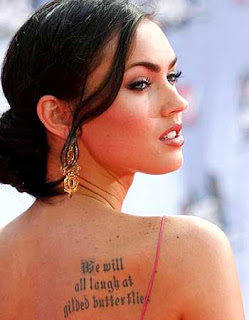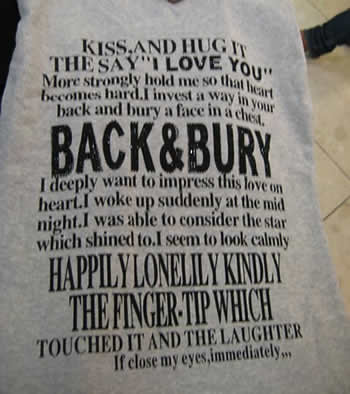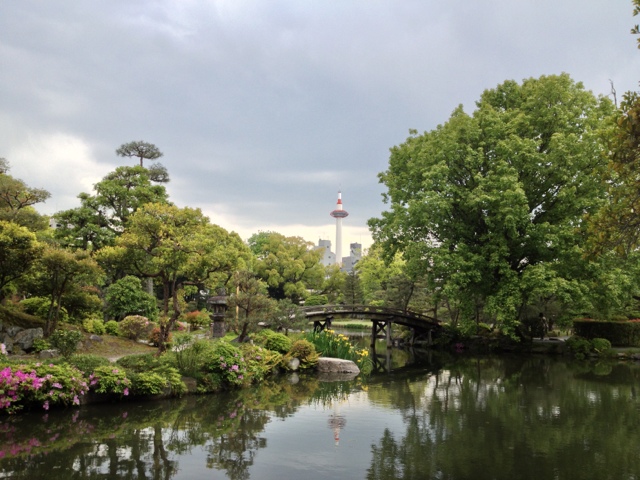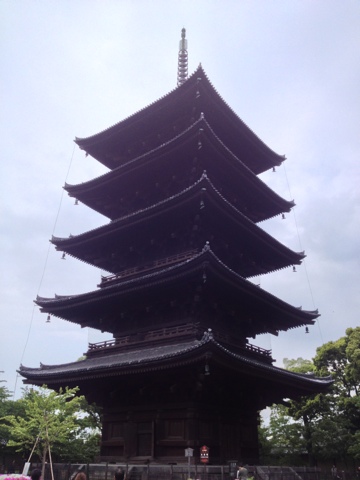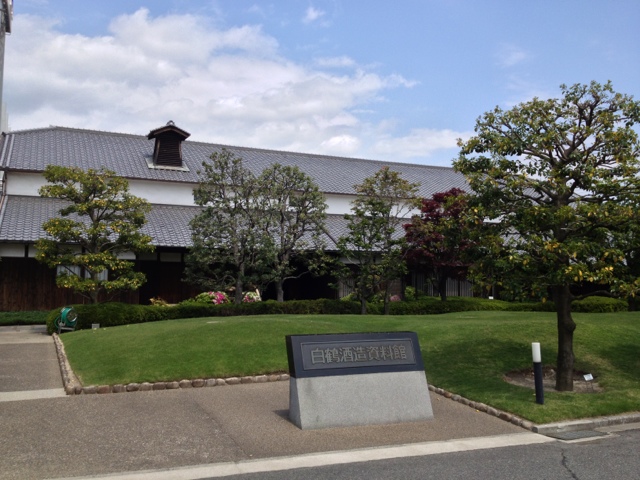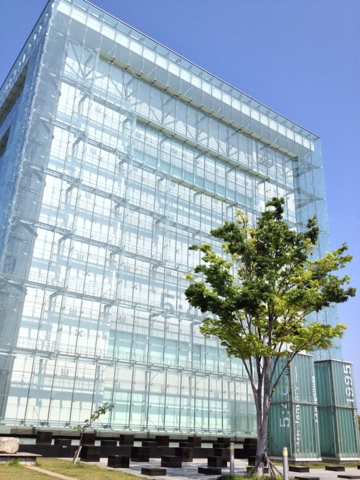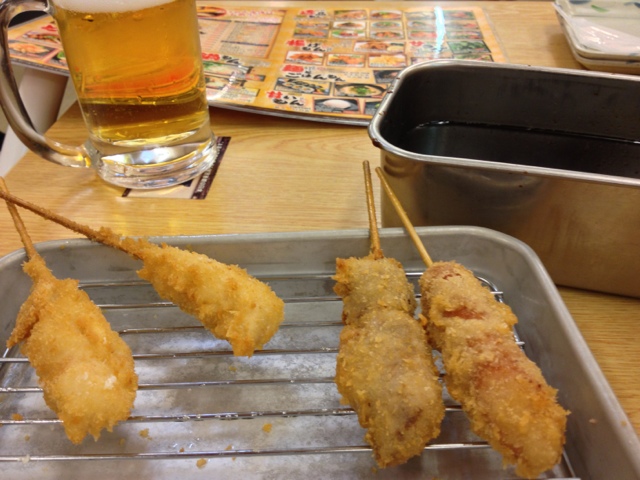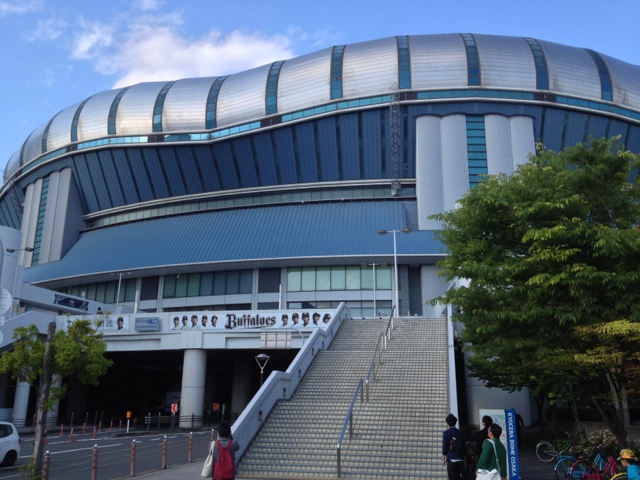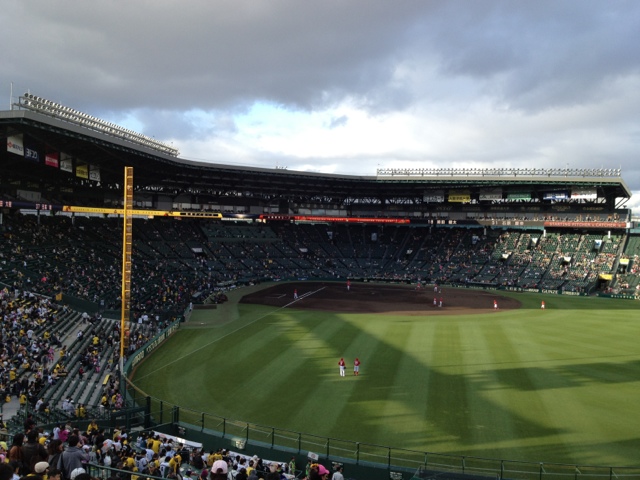Then guys started doing it - first one ear, then two. I remember the whole "which ear means you're gay?" argument going on in school.
Then, people went elsewhere on the body. Tongues and navels were the first to be socially acceptable, but that was quickly followed by any other piece of skin the person holding the needle could get his or her hands on - eyebrows, lips, cheeks, private parts. The "corset" piercing above has no practical use of course. It's just for looks. And of course, once you have the hole, you make it bigger, especially at the earlobes.
I'm not sure what piercings signify anymore, if anything. Is it just a pain thing? Is my generation and the generations younger than me suffering from a lack of suffering? "Make us feel real pain, because we don't know what it's like." I am referring to the middle class, of course - there are plenty of people suffering in America and the rest of the world.
And they don't have tons of piercings.
And then there's tattoos. Like piercings, 20 years ago they were small and tasteful. Maybe a woman got a butterfly on her back, and guys might get barbed wire or something devoted to their mom (remember that Simpsons episode?):
But those could be covered by a normal shirt. People with visible tattoos were criminals and troublemakers - Harley riding, middle-aged, dirty single men in leather jackets who spent time in jail for armed robbery.
But like piercings, the taboo has become popular. The ink crept down the arm to form sleeves, across the shoulders and back and stomach and down the legs and up the neck on to the face. And again, not too long ago, the people with that much ink were rare until fairly recently. But having, and showing off, tattoos is cool now. See Megan Fox's back (she has more along her lower waist too, plus even more elsewhere I'm sure):
Rihanna has something like 20 tattoos including what I think is her birthdate (I'm not bothering to check) and that cool star thing going down her neck:
And here's the thing about tattoos. Piercings can be taken out and they'll eventually heal. But tattoos are expensive and painful to remove. A 2012 Harris Interactive poll found 21% of adult Americans with tattoos regretted getting one. While college (high school?) is fun and exciting and a time to try stupid stuff, there are plenty of dumb things that can be recorded on Facebook, Twitter, and all those other social networking sites to ruin a career.
And in your young-20s, when you're a bro holding a beer and wearing a backwards baseball cap, looking like a reject from an Abercrombie and Fitch catalog (see earlier photo), it seems awesome. And while yes, you can hold a full-time professional job with a covered-up tattoo - just remember that you'll have to wear a neck-tie and long sleeves in the hot days of summer to keep it hidden - eventually, you will want to do something where it affects you.
Do you want to come to Japan? It's pretty hot and humid in the summer. You'll want that short sleeve shirt. Oh, but a lot of places don't allow people with tattoos in their stores. That's especially true for family places (amusement parks, water parks) and relaxation places (no spas for you). Tattoos are associated with organized crime here. Even if you're a cute little white girl from Kansas, a rule's a rule, and Japanese people are really good about making and following rules and procedures.
Okay, you're never coming to Japan. So how about that job? Your sleeve comes up a little short when you shake hands, showing off a little bit of that tattoo. If you happen to meet a Japanese client, he might not say anything, but he'll probably take his business elsewhere. And even if it's an American, a tattoo has negative connotations in the US. While part of the younger generation may understand the trend, a mature, trustworthy professional would never have a tattoo.
If that tattoo is something trendy today, will it be cool in 10 years? What happened with all those girls getting Chinese characters tattooed on their arms? And what's going to come from all this silly nonsense writing? (I swear the words in tattoos on Americans come straight from Engrish t-shirts here in Japan - or vice versa).
Yes. That sounds exactly like Megan Fox's (and plenty of other people's) tattoos. And that stuff is all over Japan. Eventually, you'll get tired of it. And unlike an old shirt or a tacky couch, it's stuck on you forever.
You want kids? Or a wife? How do you explain that girl's name or picture on your body? (Flip the genders, ladies.) How do you teach your children the errors of your ways? I suppose you could say "Look how stupid Mommy was. Don't be stupid like Mommy."
Finally, I know it's tough. You're 20. That tattoo of an Angry Birds bird flying at North Korea sounds awesome. But before you put your name across your back in gangster-style font, remember this: you get old. And you look like this guy:
Sure, he's a vegan. And he probably got that tattoo recently. But you, too, will go bald, wear glasses, and be slightly overweight. And then you'll look really stupid. Like him.
Which brings me to America vs. Japan. There are a few Japanese "bros" here though they take on a slightly different style. There are guys that have mohawks or dress in goth clothes or look like Japanese Hollister models and most of them over the age of 20 can kick your ass at drinking. But pay attention. You don't see tattoos. You don't see extra piercings. Women here wear pantyhose, and some younger women wear styles that simulate a tattoo somewhere on the leg. But they aren't real. I can count the Japanese women I know with piercings other than the earlobes on one finger. It just isn't cool here.
And I'm glad for that. I recognize that most tattoo work is an art. And some tattooists are true artists. But I don't see the meaning for it. As for piercings, I still don't see it as anything other than a way to feel pain.
You can argue that you are trying to express yourself. But if you can't express that part of yourself through words, emotions, and actions, then it's just not important enough of an idea to express.
Can you not carry a picture of your child in your wallet? "Oh you have kids?" "Yes, this is my son, 10 years ago..." Or your girlfriend? Or wife?
You're funny? Tell a joke.
You're a geek? Get a t-shirt.
I found this comment while researching this post from someone who calls himself williamo:
[The author's] post reminds me of how I used to think when I was younger. I wasn't about following a crowd, but tattoos are something that I saw as a way of expression and I wanted to get one or two. Then I realized, the only reason why I was doing it is because I saw somebody else that did it.Now let me say that a tattoo or piercing doesn't bother me. Just ask my ex. And I fully understand and agree that in today's American society (and for quite some time), tattoos and piercings do not signify criminal behavior and in fact have become mainstream in America.
But is this just a fashionable trend? Will it run its course and fade away, with the remnants left behind? (How) will societal views of tattoos and piercings in business situations change over the decades? Can a man with tattoo sleeves ever successfully run for president? What about a nose ring? One fourth of the adult population in America is tattooed. How will the vast majority of American adults react to it?
Not all tattoos and "extra" piercings are visible, and if small enough and placed "properly" enough, are easy enough to hide except to share with those you really care about. Most people who have tattoos most likely have one or two small ones and can keep them hidden. And reading some of the opinions people have posted online, tattoos are widely acceptable if they are small, meaningful, and well-placed - visible or not.
In Japan, things are somewhat opposite. While younger people have been getting more tattoos than before, local governments and businesses have been getting tighter on "crime" - which includes distinguishing criminals as having tattoos. An interesting study states that about 75% of onsen (public baths) in Hokkaido let tattooed people use their facilities, though about 25% of them have visual (posters) or verbal bans on tattoos in effect. I couldn't find any actual data on what percentage of the population has tattoos. Tattoos were illegal in Japan until the end of World War II when American influences in Japan's government liberalized the laws, so now that a couple generations have passed some of the social stigma has passed, though certainly not all.
I think one thing to remember here is that body modification - especially that which is visible - has far-reaching effects that you can't possibly foresee. While it's your body to do with as you feel, when push comes to shove you must interact with society, and society's acceptance of your style can change as your place in society changes. In America, you can go to high school in shorts and a t-shirt. In Japan, you have to wear a uniform. As a businessman both in the States and Japan, you probably need to wear a suit and have a "conservative" hairstyle. I remember several of my "first" jobs (not too long ago, either) stating that I couldn't grow a beard. Would you go to a fine restaurant and order food from someone with a giant septum piercing? (If you have a septum piercing, I'm sure the answer is yes. What would the rest of society think?) And it's this view - the rest of society - that makes the difference.
In Japan, society frowns upon the existence of tattoos and extreme appearances. People are very polite and on the street they probably won't say anything to you. They also are intelligent and understand that other societies have other views. But there are plenty of stories out there of people with tiny, fashionable tattoos that someone gets a glimpse of, and the tattooed person gets kicked out of a water park or public bath. And I've discussed celebrities with students and they frequently mention with disgust about their tattoos.
I'm not sure why this turned out to be such an anti-tattoo post. I don't have any tattoos or piercings, obviously, but I hope it's clear that I don't have an issue with other people having them. I think I want to help people be aware of difficulties they face having tattoos in Japan, and hopefully a little realization that the same thing is still true in America as well. And now that I wrote all this, I completely forgot the inspiration for the post. Seriously. I checked my web history, and what I did before this had no relation to tattoos or piercings. Wow.
I'm interested in your thoughts, so please add a comment!



